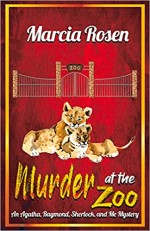 Member Benefit #4
Member Benefit #4
The Member’s Edge is a monthly newsletter for NAIWE members that equips them to take advantage of their member benefits. It features NAIWE experts and grammar articles. From the Expert is a monthly newsletter for NAIWE members that educates them on a specific Board of Expert member’s expertise.
 Visit the NAIWE website to see all of the member benefits.
Visit the NAIWE website to see all of the member benefits.

 We wanted to get to know Laura Pennington Briggs (
We wanted to get to know Laura Pennington Briggs ( June 1: National Say Something Nice Day. Make the day pleasant for someone today by saying something nice.
June 1: National Say Something Nice Day. Make the day pleasant for someone today by saying something nice.
 Elizabeth Belasco, PhD
Elizabeth Belasco, PhD NAIWE is always coming out with new
NAIWE is always coming out with new 

 We wanted to get to know Leslie Truex (
We wanted to get to know Leslie Truex ( Today’s
Today’s  Since 1986,
Since 1986,